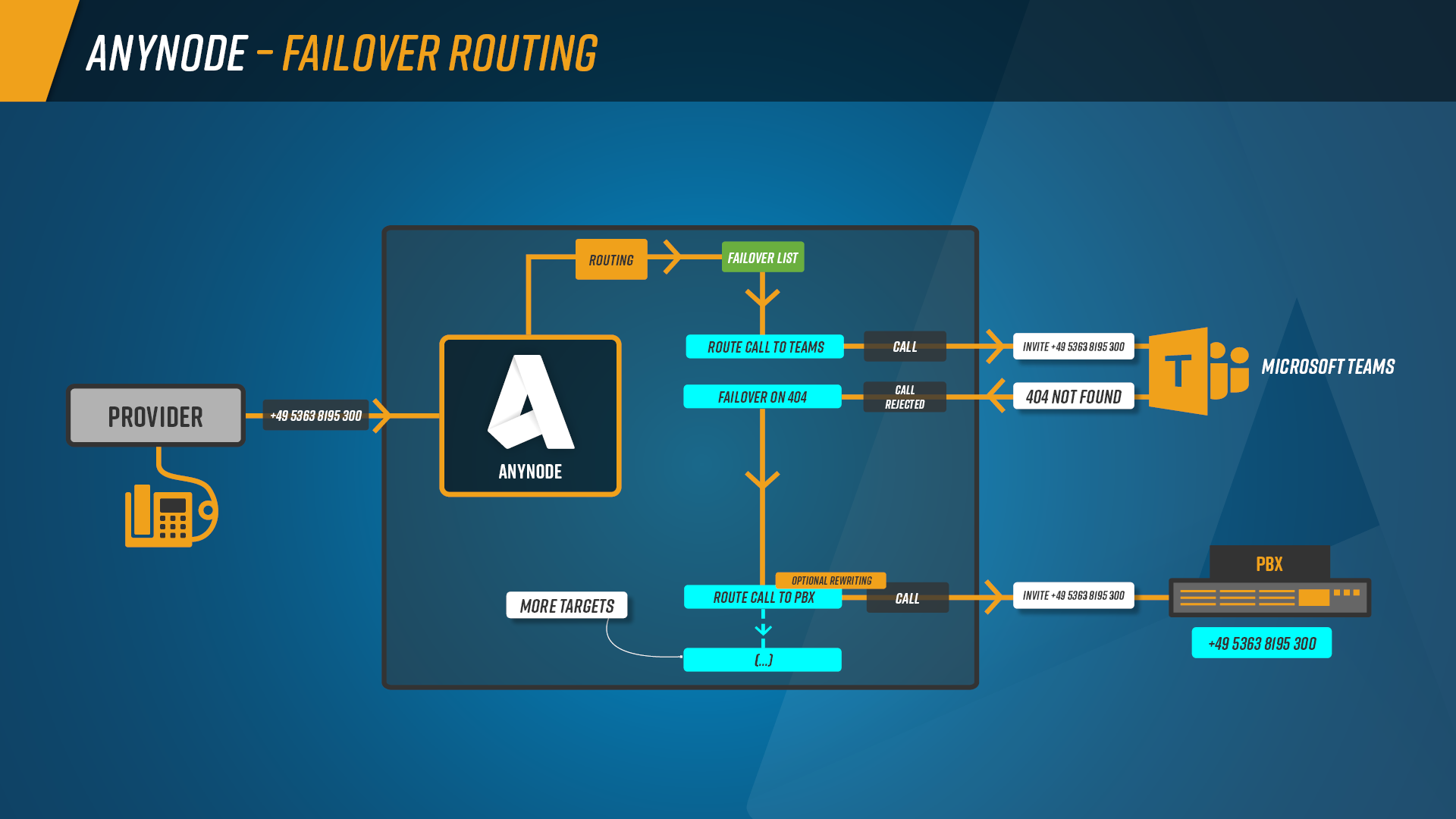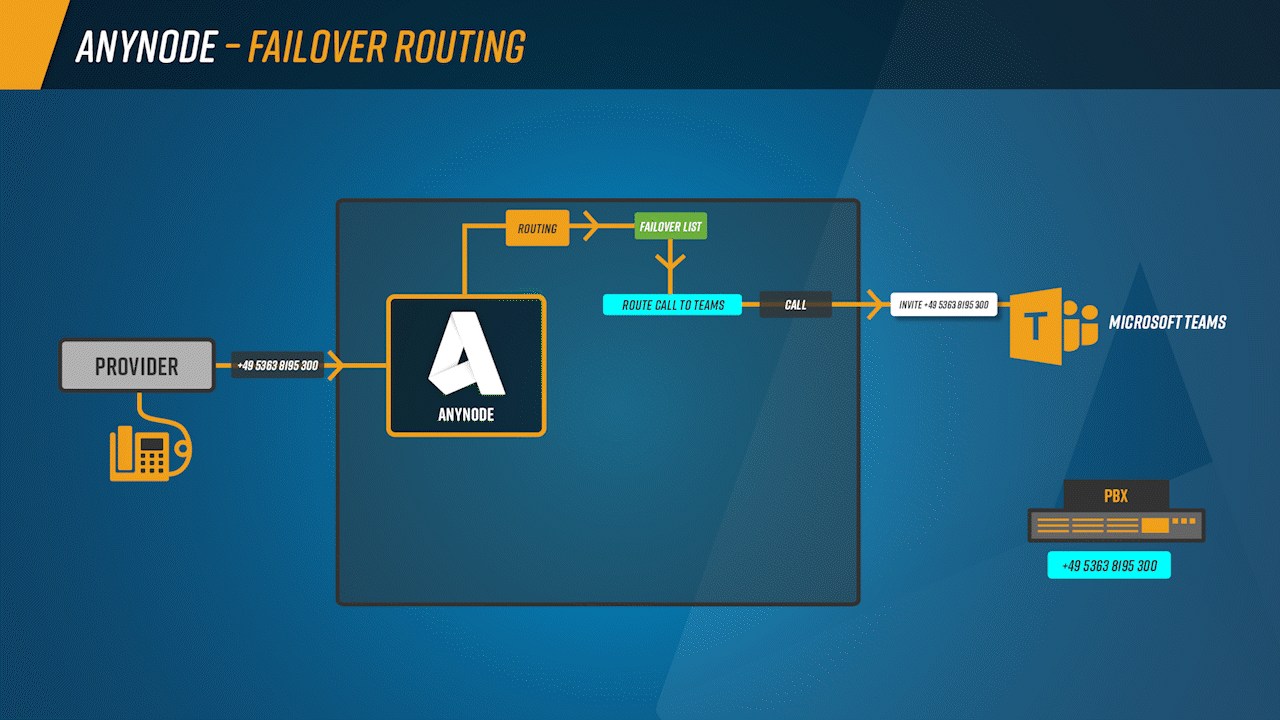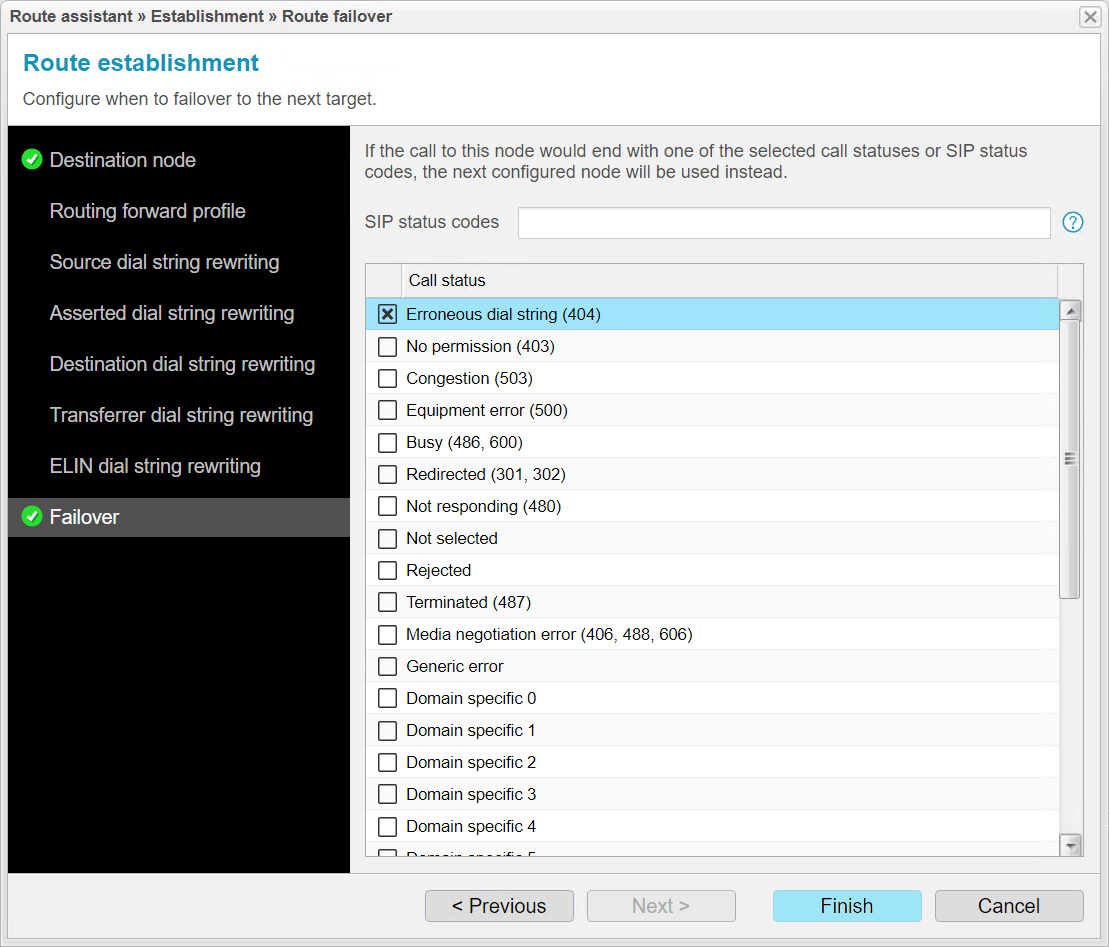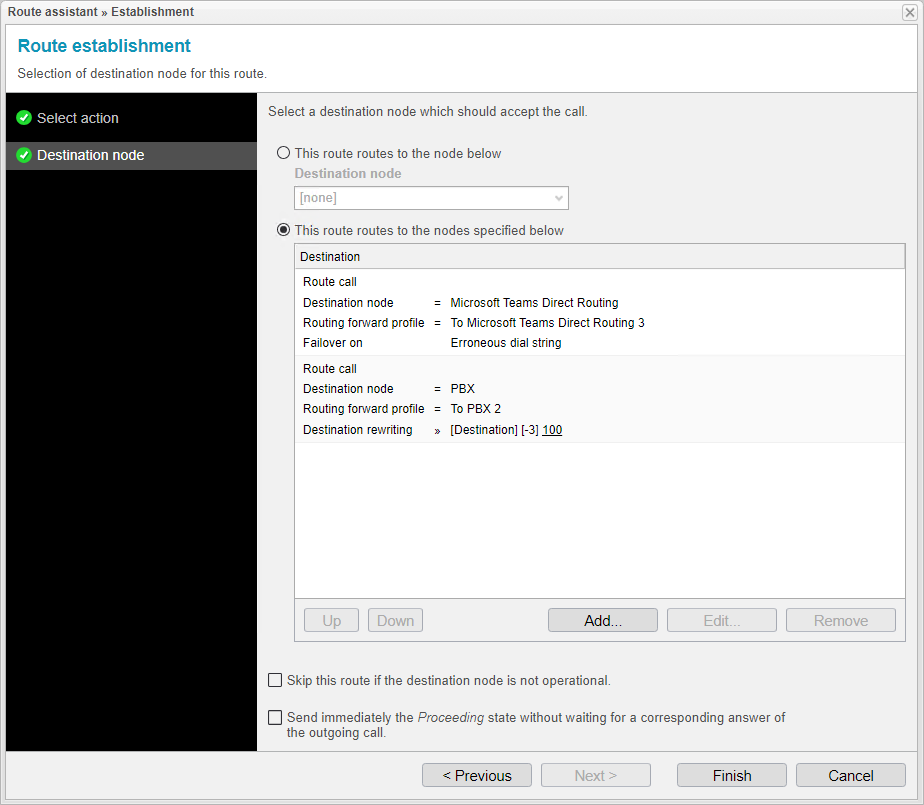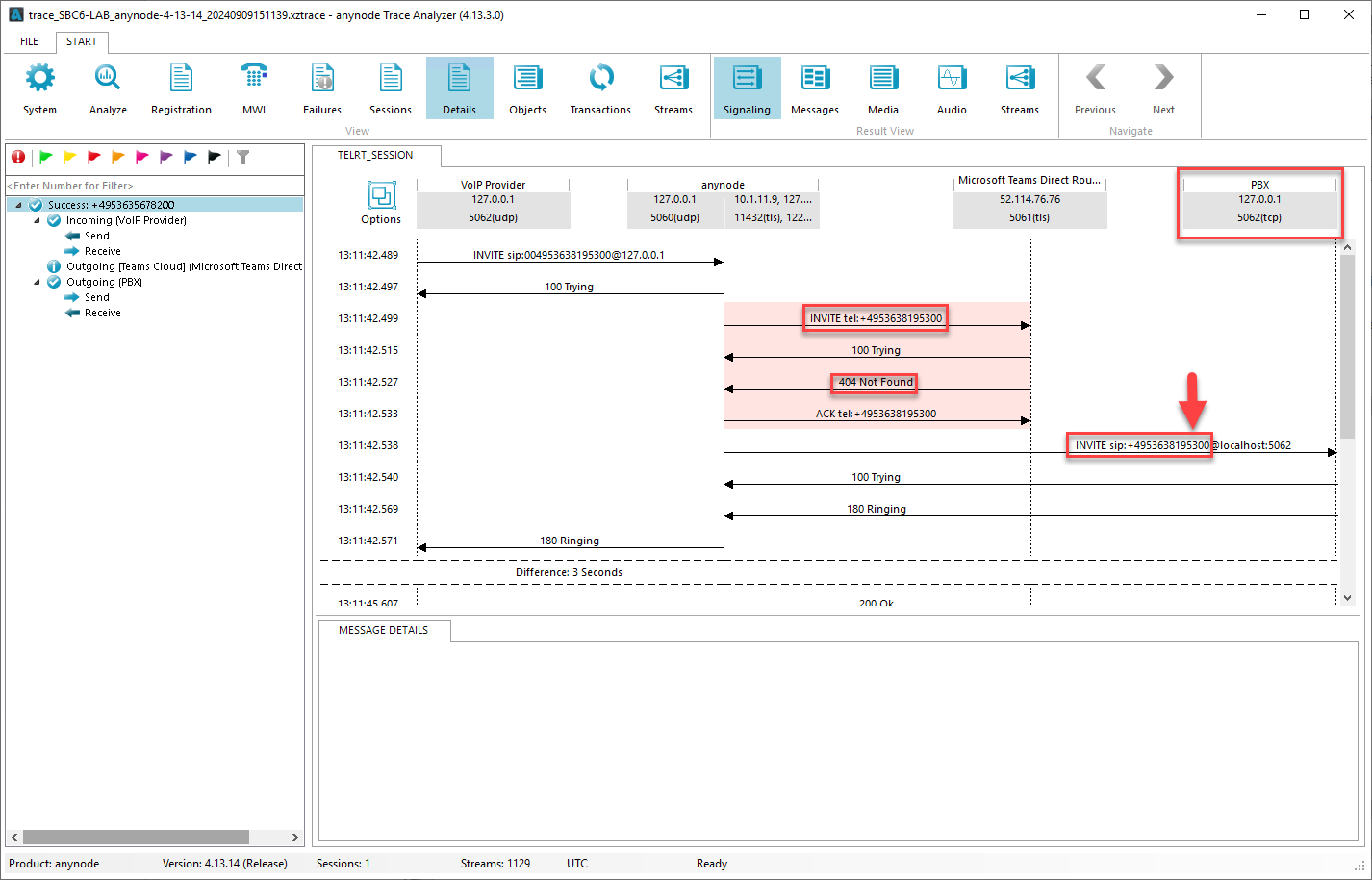Failover Routing
Flexible call forwarding for various scenarios
The Failover Routing feature in anynode allows you to define multiple target nodes within a route, each with specific routing and rewriting rules. This enables automatic switching to the next entry based on certain status messages, ensuring flexible and reliable call management.
What makes this solution unique is that it’s configurable directly within the routing settings. This allows for a wide variety of target types. Additionally, rewrites can be applied during the failover process, offering further flexibility.
Failover Routing ensures that calls reach their destination even when the primary route fails. It automatically adjusts the routing, minimizes downtime, and guarantees stable communication.
Characteristics
- Support for multiple target nodes within a single route.
- Customizable routing based on flexible status codes.
- Integrated routing-forward profiles and rewriting rules.
- Ensures seamless call forwarding during network outages, maintenance, or when participants are no longer reachable.
- Reduces complexity in setting up and managing call forwarding.
Benefits
- Prevents communication interruptions during server failures or network changes.
- Enables flexible call forwarding for various scenarios.
- Reduces configuration effort and minimizes the risk of errors.
- Allows rewrites during failover for additional flexibility.

